Does Protein Help Grow Your Glutes? How Much Do You Need?
Author:
Unlock your full potential by engaging with our experts and community! Have questions about your fitness journey or looking for expert advice on weightlifting techniques? Don’t hesitate — leave a comment below and Oleksandr Maksymenko will provide a personalized answer and insights to help you reach your goals.
Torokhtiy is reader-supported. Some links are affiliate links, and we may earn a commission at no extra cost to you. See our disclosure page for details.
In this age of Instagram and people throwing their back out just to get that perfect snap of their behind, it seems like well-defined, strong glutes are more important than ever. One key dietary component that often comes up in discussions about muscle growth in general is protein. But does it help grow your glutes, and if so, how much protein do you need?
Protein is key for muscle growth and repair. It gives the building blocks your body needs to increase muscle mass, and this includes your glutes as well. In this article, we’ll focus specifically on the glutes, how protein helps build them, and how much should you consume to get the best results.
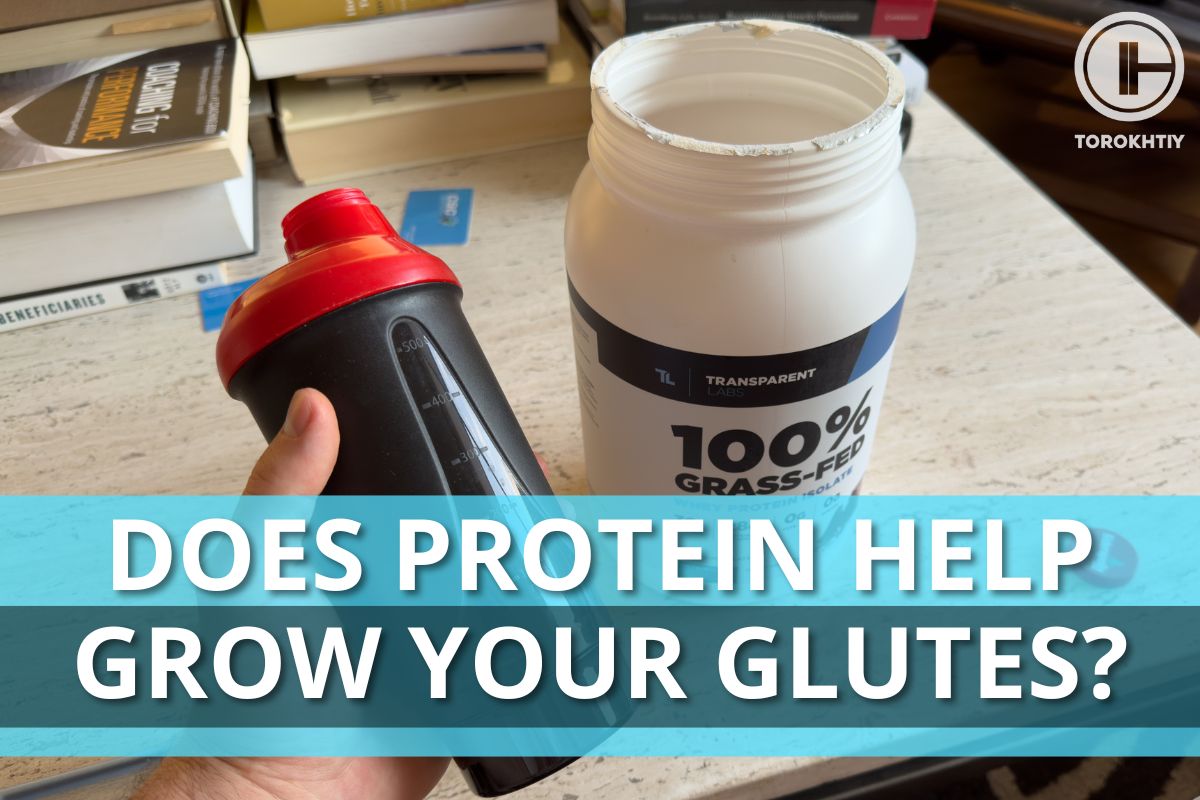
Why Do You Need Protein for Buttocks Growth?
To build bigger glute muscles, you need to consume enough protein. Here are just some of the reasons why protein is essential for booty gains:
1. Muscle Building
To build bigger glute muscles, protein provides the essential amino acids needed for muscle growth. Once you’ve finished training, protein is used to build the fibers back, therefore contributing to bigger glutes.
2. Appetite Suppression
If you’re looking to lose weight or tone up and keep your booty gains, protein is the most satiating macronutrient, meaning it keeps you fuller for longer.
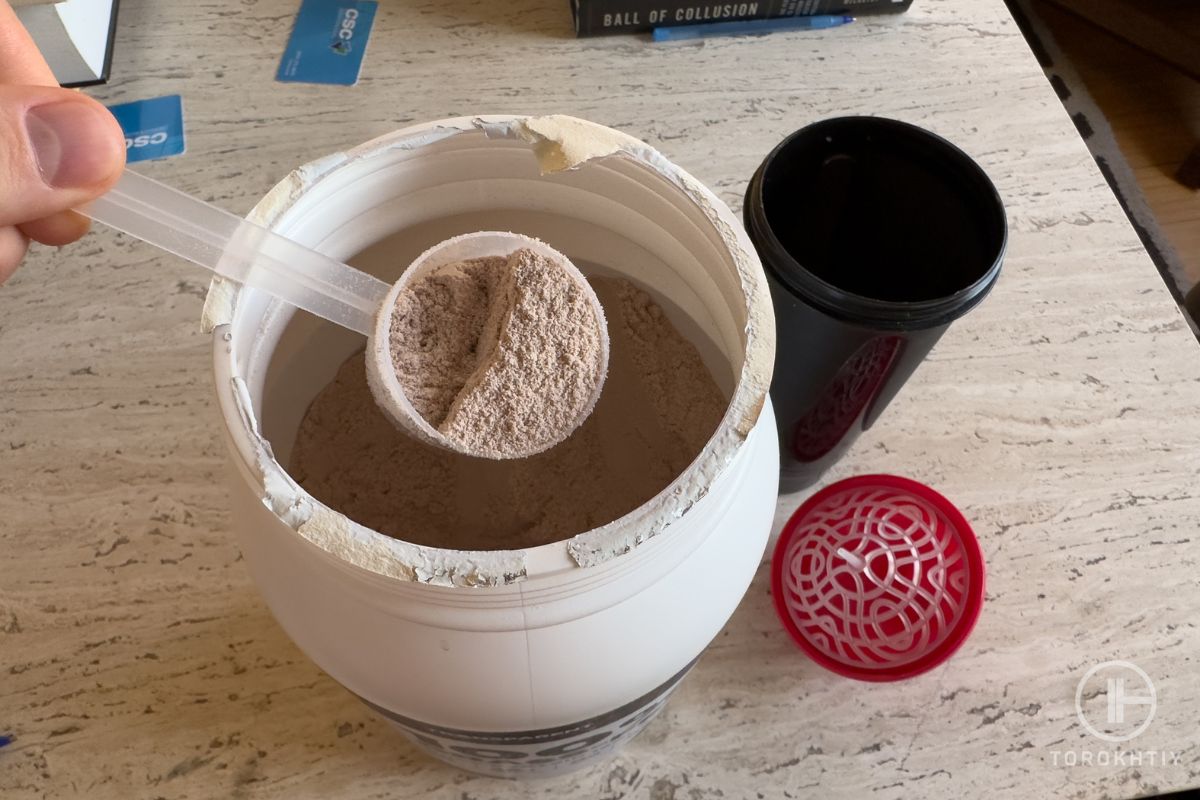
3. Bone Health
Consuming adequate protein helps to maintain better bone mass and overall bone health. People who eat higher daily protein amounts tend to have a much lower risk of fractures and osteoporosis as they age.
Consuming adequate protein and improving bone health as you age helps to keep you training regularly with the goal of bigger and better glute muscles.
4. Metabolism Boosting
The thermic effect of food refers to the number of calories your body needs to digest food and make it usable in the body. Out of all the macronutrients, protein takes the most energy to digest, therefore boosting metabolism and helping burn fat. Both these things help contribute to bigger and better-looking glute muscles.
How to Find the Best Protein Powder for Booty Gains?
When finding the best protein shakes for booty gains, consider the factors below:
Tips From the Champ
Out of three main types of whey (isolate, concentrate, and hydrolysate), whey isolate is the highest quality as it undergoes the biggest filtration process. This gives it the highest protein content out of the three types at 90%. Whey isolate is slightly lower quality at 80% and whey hydrolysate digests rapidly but costs a lot more.
Olympic Weightlifting Champion
1. Type of Protein
When looking for glute gains, protein type should be your biggest consideration as it determines the protein quality.
• Whey Protein
Derived from cow’s milk, whey protein is one of the most common protein sources. In terms of amino acid composition, it contains the most complete amino acid profile.
• Plant Proteins
Whilst plant proteins typically contain a less complete amino acid profile, they provide an excellent protein source for vegetarians and vegans or those with certain food intolerance. Common types include pea, rice, soy, and hemp protein. Plant proteins are included as mixtures to give you a full amino acid profile but can also cause more gas and bloating compared to whey.
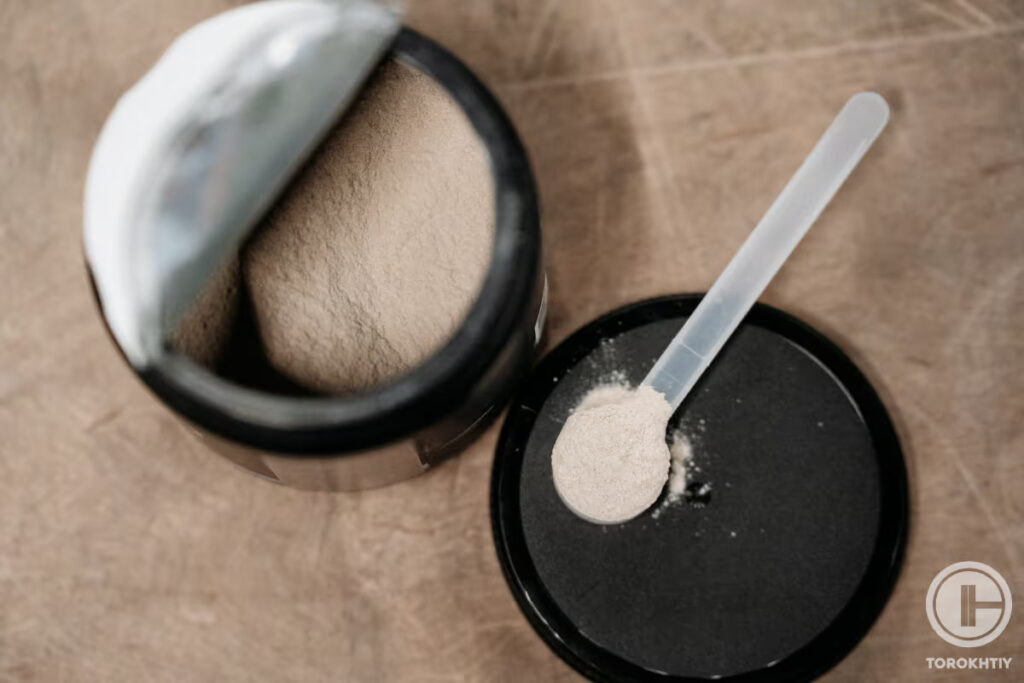
2. Extra Ingredients
Commonly included ingredients include digestive enzymes, BCAAs, omega-3’s, vitamins, and minerals, all of which can enhance the protein’s effect and help with booty gains if dosed correctly according to current scientific literature. Ingredients to watch out for include sweeteners, colors, and flavoring. Make sure to check the amount included before purchasing.
3. Flavor and Mixability
Check the protein powder to see if it contains any emulsifiers and anti-clumping agents, both of which help with mixability.
4. Quality/Price
If you want to maximize your glute gains, check that you’re getting high-quality protein. Some may be third-party tested, organic, non-GMO, and produced under cGMPs. Compare the quality to the price before purchasing.
Whey Protein Isolate by Transparent Labs
- Best For: Muscle Building, Recovery, Cutting
- Flavors: Chocolate peanut butter, Oatmeal chocolate сhip cookie, Milk chocolate, French vanilla, Peanut butter, Dark chocolate, Strawberry, Vanilla, Peanut butter, Mocha, Cinnamon French Toast, Unflavored
- Protein Source: Whey Protein Isolate
- Suitable for Vegans: No
- Package Information: 2.28 lb/30 servings, 4 lb/55 servings
- Protein-by-Weight Ratio: 81-87%
- Protein: 28 grams
- Carbohydrates: 0-3 grams
- Fat: 0-1 gram
- Calories per serving: 120
- Serving Size: ~33 g
- Price per serving: from ~$1.8Company Founded: 2015
- Recommended by: Hafþór Björnsson, Terron Beckham, Paul Sklar
Transparent Labs operate with transparency, with their whey protein isolate top of the pile in terms of ingredient quality and transparency. It’s a great option if you’re looking for clean ingredients mixed with 100% natural grass-fed dairy protein free from hormones, sweeteners, food dyes, gluten, and preservatives.
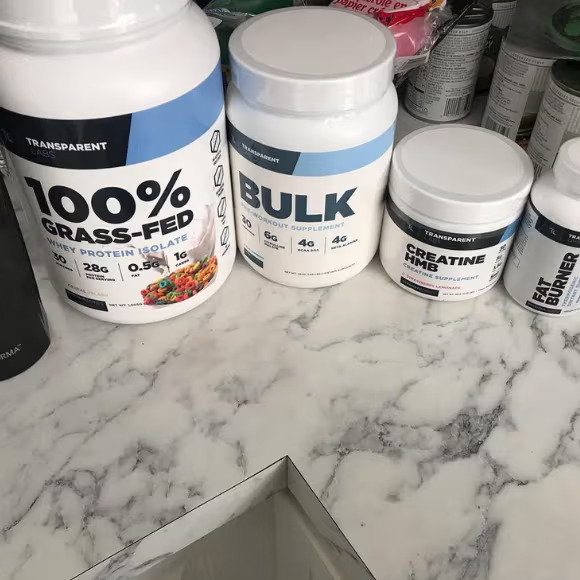
Each serving contains 28-grams of high-quality whey isolate that makes up 93% of the overall calories.
Overall, it’s a high-quality, clean protein source for glute growth that provides 28 grams in each serving making up 93% of the overall calories.
Protein Consumption Tips for Booty Gains
When consuming protein for booty gains use my tips below to help:
- Try to consume 1-6-2.2 grams per each kg of your body mass per day for optimum muscle growth
- When performing a fasted morning leg session, consider drinking a protein shake immediately following to help with muscle building and repair
- Drinking a protein shake 1 hour before a longer duration session can help provide a sustained release of protein for 2-3 hours
- The most common ways of consuming protein are to mix it with water and milk. Consider adding fruits, veggies, and healthy fats to provide added calories and extra nutrition for glute growth.
- For high-intensity, high-volume leg sessions, consuming a protein shake during the session might not be the best idea due to GI distress.
- When mixing, make sure the powder isn’t clumped up at the bottom of the shaker by using a spoon or fork to check.
FAQs
Do Protein Shakes Help You Get A Bigger Bum?
Whilst there isn’t a protein powder for glutes that magically gives you a bigger bum, protein is essential for muscle growth and therefore glute gains. With this, choosing the best protein powder for muscle growth will therefore help you get a bigger bum.
Which Protein Type Is Best For Buttocks?
Out of the different protein types, whey protein contains all the essential amino acids needed by your body for muscle growth in good amounts. Whey protein isolate is filtered to remove lactose, creating a leaner powder with more protein. Therefore, whey protein isolate is the best protein for glute growth.
Conclusion – Which Protein Powder for Bigger Buttocks Is Best?
So, does whey protein make your bum bigger? Protein provides the essential amino acids needed for muscle growth and therefore glute growth meaning it does help you get a bigger bum.
The Transparent Labs Whey Protein Isolate is one I highly recommend and think you’ll really like. It uses whey protein isolate as a high-quality protein source providing a huge 93% of the overall calories. It comes at a decent price point and contains no added sugar.
Do you use protein powder when looking for glute growth? Have you tried our recommendation? Let me know in comments below!
Also Read:
- Premier Protein vs Muscle Milk
- Protein Bars vs Shakes
- Does Protein Powder Have Caffeine
- Is Protein Powder Good For Teens
- Collagen Protein vs Whey Protein
- Best Protein For Cutting
- Do Protein Shakes Cause Constipation
- Should You Drink Protein Shakes On Rest Days
References:
- How much protein can the body use in a single meal for muscle-building? Implications for daily protein distribution // PubMed: https://pubmed.ncbi.nlm.nih.gov/29497353/
- 13 foods you didn’t know you could make with protein powder // Insider: https://www.insider.com/how-to-use-protein-powder-2018-10
- Which additives are in your protein powder? // Gainful: https://help.gainful.com/hc/en-us/articles/360017832774-Which-additives-are-in-your-protein-powder-
- How much protein do you need to build muscle? // Medicalnewstoday: https://www.medicalnewstoday.com/articles/how-much-protein-do-you-need-to-build-muscle
- 10 Science-Backed Reasons to Eat More Protein // Healthline: https://www.healthline.com/nutrition/10-reasons-to-eat-more-protein
- Photos are made by Torokhtiy Media Team
Why Trust Us?
With over 20 years in Olympic weightlifting, strength training, nutrition coaching, and general fitness our team does its best to provide the audience with ultimate support and meet the needs and requirements of advanced athletes and professional lifters, as well as people who strive to open new opportunities and develop their physical capabilities with us.
By trusting the recommendations of our certified experts in coaching, nutrition, and sports training programming, as well as scientific consultants, and physiotherapists, we provide you with thorough, well-considered, and scientifically proven content. All the information given in the articles concerning workout programming, separate exercises, and athletic performance, in general, is based on verified data.
The product testing process is described in more detail here.
Author: Oleksandr Maksymenko
Certified Sports Nutritionist,
MSc Sports Dietetics
Specializing in: Weight management, Fitness / Sports nutrition
Oleksandr is a professional fitness nutritionist certified by the Fitness Professional Association (FPA). He follows the principles of evidence-based dietetics and fosters a healthy relationship with food in his clients, ensuring there are no strict prohibitions on their favorite foods or frequent lapses. His primary goal is not only to achieve results for you but also to sustain them over the long term, all while enjoying tasty and delicious food.




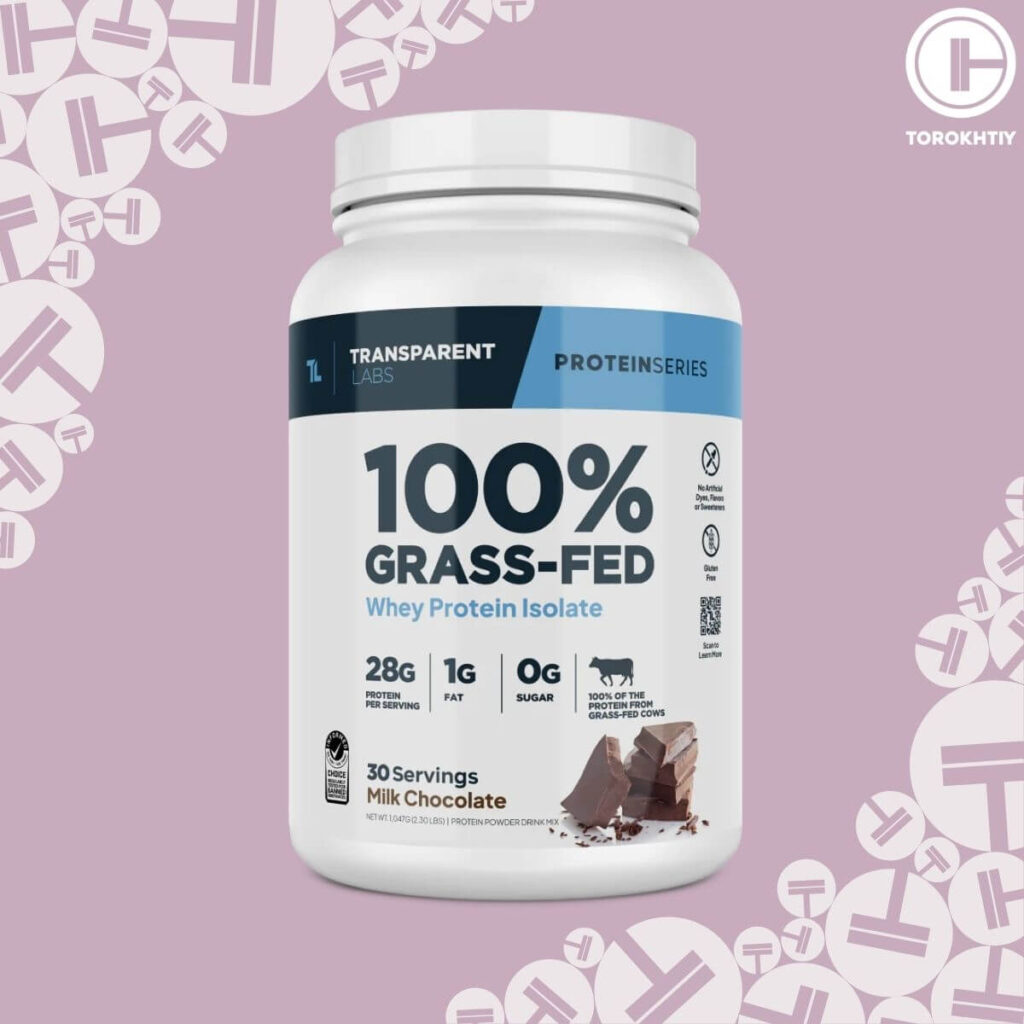
Still have questions after reading our article? Unlock your full potential by engaging with our experts and community! Don’t hesitate — leave a comment below and Oleksandr Maksymenko will provide a personalized answer and insights to help you reach your goals.